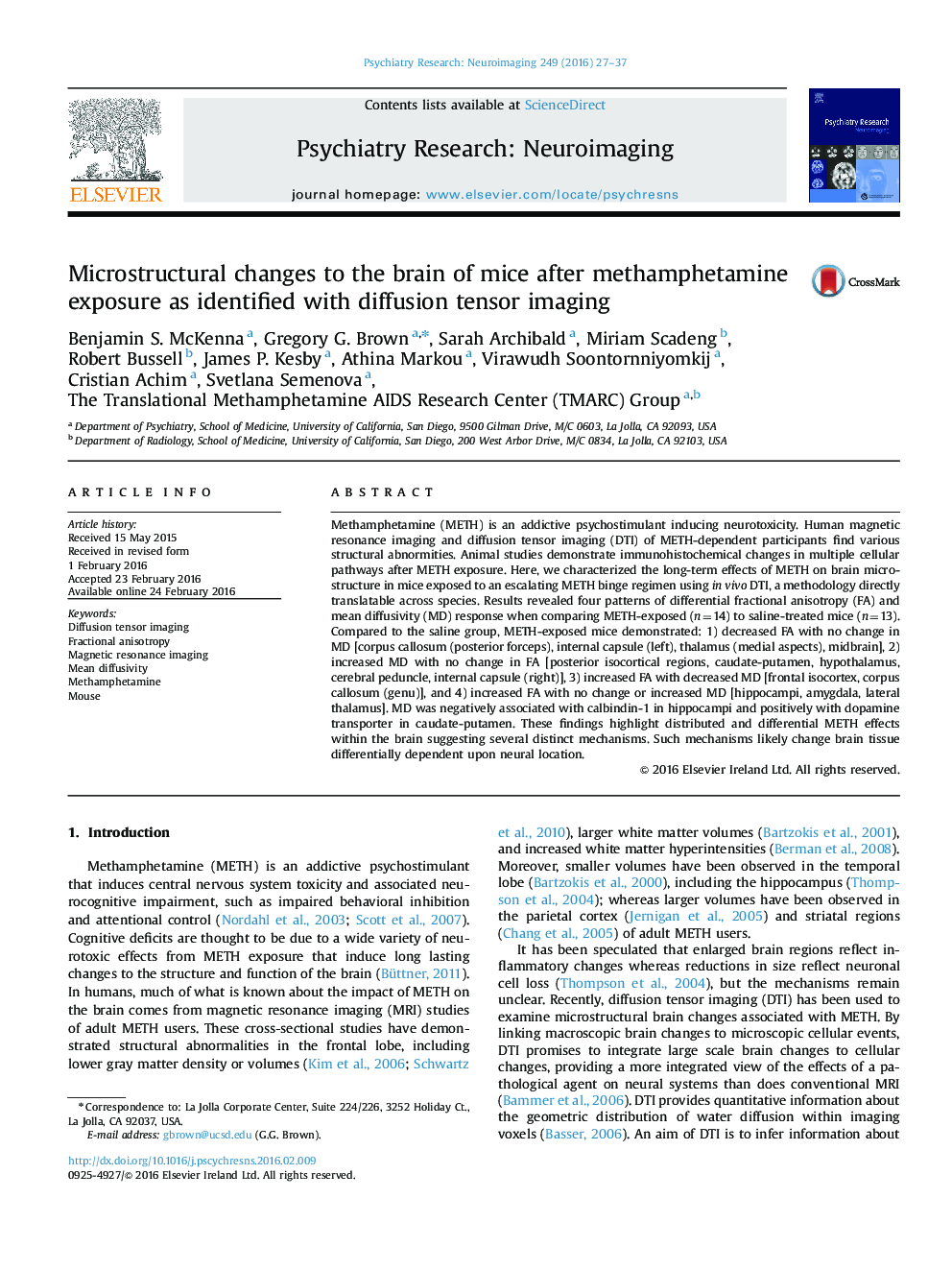| Article ID | Journal | Published Year | Pages | File Type |
|---|---|---|---|---|
| 335444 | Psychiatry Research: Neuroimaging | 2016 | 11 Pages |
•We examined brain microstructure with in vivo diffusion tensor imaging of mice.•A methamphetamine binge regimen produced long lasting microstructural brain changes.•Four different patterns of signal change were observed in white and gray matter.•Findings highlight distributed and differential methamphetamine effects.•Methamphetamine likely changes brain tissue differentially depending on tissue type.
Methamphetamine (METH) is an addictive psychostimulant inducing neurotoxicity. Human magnetic resonance imaging and diffusion tensor imaging (DTI) of METH-dependent participants find various structural abnormities. Animal studies demonstrate immunohistochemical changes in multiple cellular pathways after METH exposure. Here, we characterized the long-term effects of METH on brain microstructure in mice exposed to an escalating METH binge regimen using in vivo DTI, a methodology directly translatable across species. Results revealed four patterns of differential fractional anisotropy (FA) and mean diffusivity (MD) response when comparing METH-exposed (n=14) to saline-treated mice (n=13). Compared to the saline group, METH-exposed mice demonstrated: 1) decreased FA with no change in MD [corpus callosum (posterior forceps), internal capsule (left), thalamus (medial aspects), midbrain], 2) increased MD with no change in FA [posterior isocortical regions, caudate-putamen, hypothalamus, cerebral peduncle, internal capsule (right)], 3) increased FA with decreased MD [frontal isocortex, corpus callosum (genu)], and 4) increased FA with no change or increased MD [hippocampi, amygdala, lateral thalamus]. MD was negatively associated with calbindin-1 in hippocampi and positively with dopamine transporter in caudate-putamen. These findings highlight distributed and differential METH effects within the brain suggesting several distinct mechanisms. Such mechanisms likely change brain tissue differentially dependent upon neural location.
